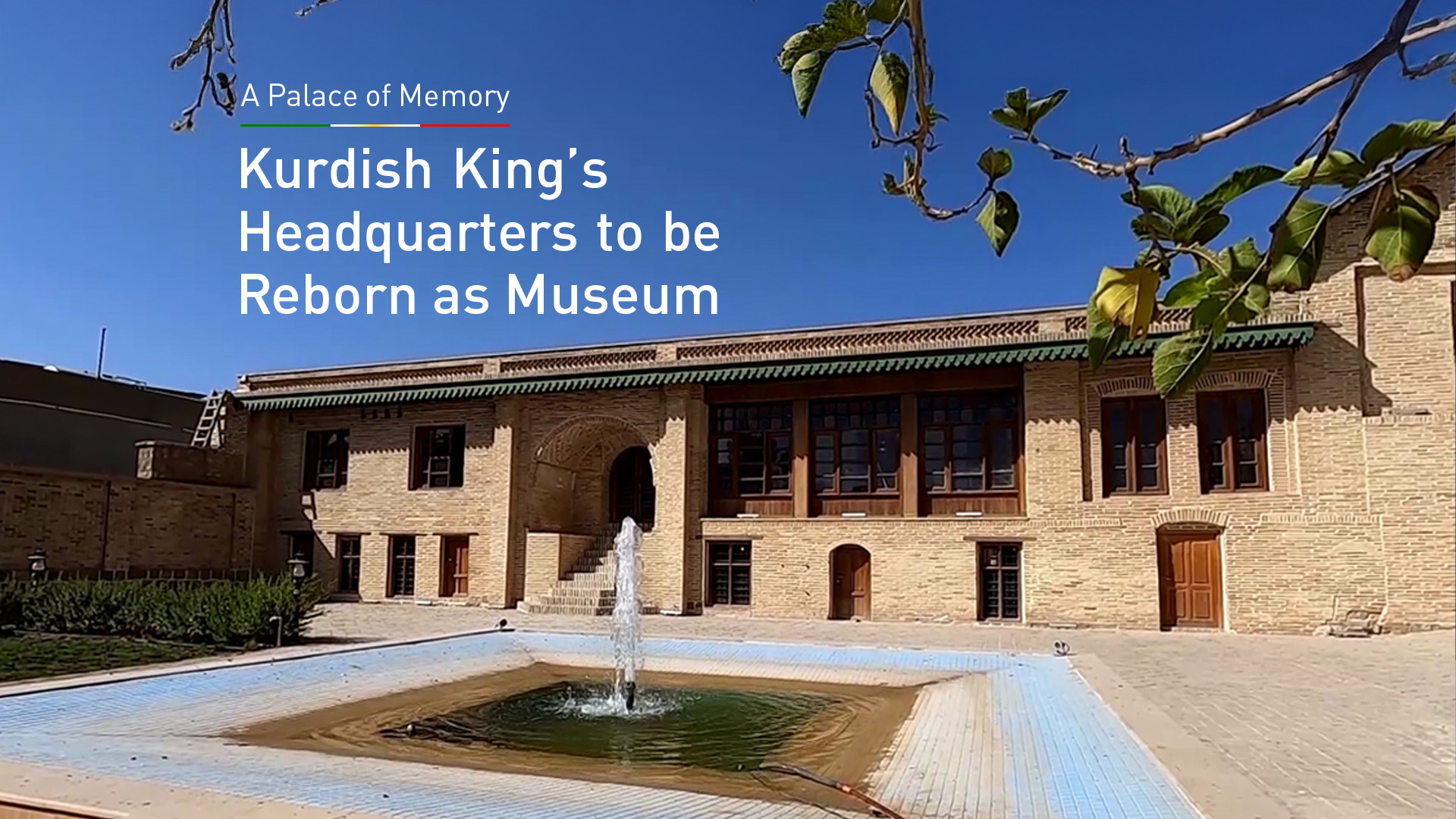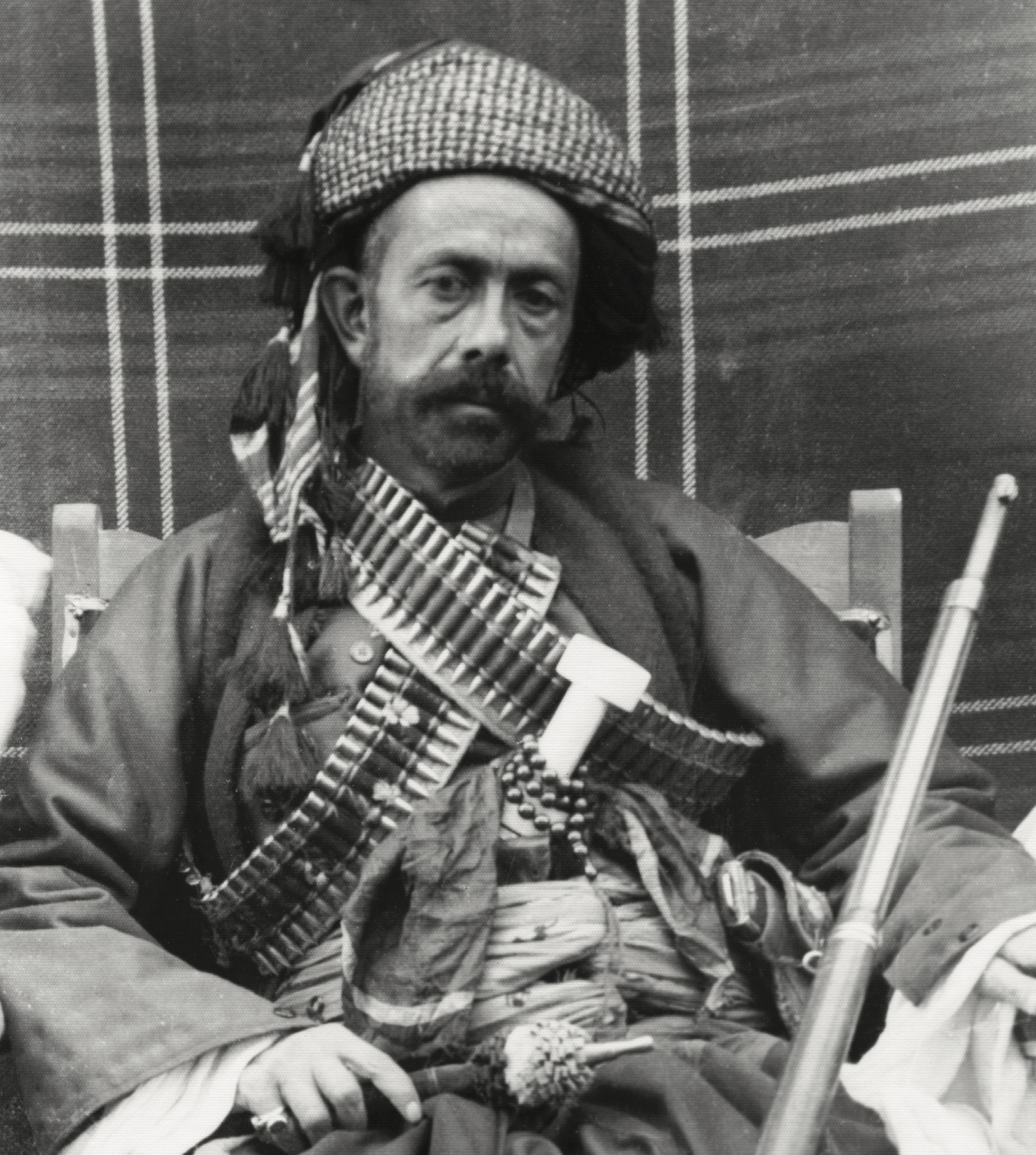In Historic Headquarters, the Legacy of Kurdistan's King Comes to Life
The Sulaimani headquarters of Sheikh Mahmud Hafid, the "King of Kurdistan," is being transformed into a major historical museum. The project will house rare documents from international archives, artifacts from the British-Kurdish wars, and Sheikh Mahmud's own manuscripts.

ERBIL (Kurdistan24) – In the heart of Sulaimani's famed Malkandi neighborhood, a historic building that once served as the nerve center for a young Kurdish kingdom is being meticulously brought back to life, not just as a restored structure, but as a vibrant and modern museum dedicated to the life and legacy of Sheikh Mahmud Hafid, the ruler and declared "King of Kurdistan" who led a series of historic uprisings against the British Mandate in the early 20th century.
The ambitious project, set to be the first of its kind in the Kurdistan Region, aims to gather the scattered fragments of a pivotal chapter in Kurdish history, transforming Sheikh Mahmud's former headquarters into a cultural and historical sanctuary that will house a priceless collection of documents, artifacts, and personal manuscripts.
The headquarters, a building of immense historical significance that was originally constructed between 1923 and 1924, is undergoing a careful renovation that seeks to preserve its original architectural style while incorporating contemporary design elements to create a world-class museum experience.
The initiative, which was conceived in 2012 but formally undertaken by the Civil Development Organization (CDO) in 2022, is a labor of love driven by a community of history enthusiasts dedicated to safeguarding a crucial part of the national memory. The project is scheduled for completion next year.
Bakhtiar Ahmed, the Director of the CDO, described the unique and comprehensive scope of the museum to Kurdistan24.
"This is the first time a museum of this kind is being opened in the Kurdistan Region," he stated, explaining that it will be divided into two main sections. "One is dedicated to documents, some of which were scattered and have been collected from Britain, India, France, and Iraq. We also have Sheikh Mahmud's own manuscripts, which we have been gradually gathering to house in this museum."
This painstaking process of repatriation and collection aims to create the most complete archive of Sheikh Mahmud's rule and the broader political context of the era.
The second section of the museum will be dedicated to the material culture of the period.
"The other section is for artifacts—those used in Sulaimani during the time of the war with the British, as well as items that the British themselves brought to Sulaimani," Ahmed explained.
In a poignant historical turn, he added, "The museum will also feature medals that were awarded in Britain to the officers who participated on the Sulaimani war fronts." This juxtaposition of Kurdish and British artifacts will offer a multifaceted view of a conflict that profoundly shaped the trajectory of the Kurdish quest for self-determination.
The renovation is being guided by a deep respect for the building's historical integrity. The original designs and motifs from Sheikh Mahmud's time are being preserved, with any new design elements carefully crafted to complement the existing form.
The museum will also leverage modern technology to bring the era to life for a new generation.
All newspapers published during that period will be displayed using innovative digital methods, allowing visitors to engage directly with the historical record. Handwritten documents in various languages will also be showcased, providing a rich, multilingual narrative of the period.
In a fascinating acknowledgment of the complex and often adversarial relationships of the time, a dedicated room within the museum will focus on Major Ely Banister Soane, a British political officer and spy who was a key figure in Sulaimani from 1918 to 1921.
This room will house a collection of his personal belongings and photographs, offering a unique and intimate glimpse into the life of one of Sheikh Mahmud's primary British interlocutors.
The creation of this museum is seen by its proponents as a vital act of national preservation. Sdiq Salih, a member of the Zheen Archive Center (binikeyi jîn in Kurdish), emphasized the project's importance in a society that he feels sometimes neglects its past. "We need to be reminded," he stated. "We are a nation that, more or less, we can say is not very fond of history. Therefore, we need to find ways to continuously keep that history alive. One of these ways is by creating museums."

Sheikh Mahmud Barzanji, as he is also known, remains a towering and heroic figure in Kurdish history.
As detailed in a report by the Kurdistan Chronicle, his story is inextricably linked to the turbulent aftermath of the First World War and the partitioning of the Ottoman Empire.
Initially appointed by the British as a local ruler in Sulaimani to counter Turkish claims to the region, the ambitious Sheikh Mahmud quickly chafed under the restrictions imposed on him.
He led a Kurdish uprising, was captured and exiled to India, only to be brought back by the British in 1922 in a desperate attempt to quell a growing pro-Turkish rebellion among the Kurdish tribes.
Upon his rapturous return to Sulaimani, Sheikh Mahmud swiftly cast aside the limits of his British mandate. In November 1922, he declared himself the King of the Kingdom of Kurdistan, forming his own cabinet and seeking to establish an independent state.
His rebellion, though ultimately suppressed by the superior firepower of the British Royal Air Force, represented a foundational moment in the modern Kurdish nationalist movement.
Historical and military records reveal that during Sheikh Mahmud Barzanji’s rebellions in the early 1920s, the British Royal Air Force carried out bombing raids on Kurdish villages and rebel strongholds. These operations, documented both in British mandate reports and Kurdish accounts, entailed destruction of civilian property and the deaths or harm of non-combatants, though sources do not conclusively describe this as the first time the RAF attacked civilians.
Sheikh Mahmud is remembered today as a brave and defiant leader who fought for the independence and dignity of his people, a pioneer for the generations of Kurdish leaders who would follow.
The new museum in his former headquarters will serve as a permanent and powerful tribute to this legacy, a place where the documents that shaped a kingdom and the artifacts that witnessed a rebellion will be preserved for posterity.
It is an effort to ensure that the story of Sheikh Mahmud Hafid, the King of Kurdistan, is not just remembered but actively engaged with, understood, and passed on to a new generation.
